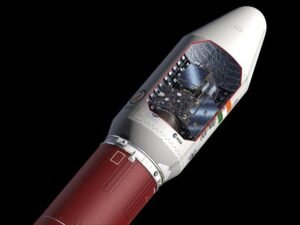The much-awaited launch of ISRO’s Polar Satellite Launch Vehicle (PSLV-C59), carrying the European Space Agency’s (ESA) Proba-3 satellites, has been postponed at the last minute. The launch, which was scheduled for today, has now been rescheduled for tomorrow, citing an anomaly in the Proba-3 satellites. Here is a detailed breakdown of the mission, the postponement, and its significance.
Why Was the ISRO’s ESA Proba-3 Launch Postponed?
The PSLV-C59 launch countdown was going well at the Satish Dhawan Space Centre in Sriharikota when an anomaly was identify in the Proba-3 satellites. ISRO officials confirmed that the weather conditions were favorable for the launch, but the technical anomaly was forcing a delay. This rescheduling exemplifies the concern of ISRO to make sure the mission is safe and accurate.
What is Proba-3?
Proba-3 is a demonstration mission by ESA in orbit design to demonstrate advance technologies in formation-flying. This consists of two the Coronagraph Spacecraft and the Occulter Spacecraft function as a single spacecraft in orbit.
ISRO’s ESA Proba-3: Space Mimicry of Solar Eclipse
This will be a unique mission where the two satellites are to fly in formation, emulating a total solar eclipse. Technology is so innovative that it blocks the light of the Sun, with an extreme requirement to maintain position and orientation. PSLV-C59 and Proba-3: Innovative Features
PSLV-C59 has been depicted to be the heavy-lift rocket that India operates.
India’s workhorse rocket, PSLV, stands at 44.5 meters tall and weighs 320 tonnes. It has done 61 flights with great reliability and versatility. For this mission, PSLV will take Proba-3 to a highly elliptical orbit.
Proba-3 Satellite Configuration
The Proba-3 satellites weigh a combine 545 kilograms and are to be launch in a stack configuration. After deployment at an altitude of 600 km, they will separate and perfectly align to perform their duties.
ISRO’s ESA Proba-3: Significance of the ISRO’s ESA Proba-3 Mission
World’s First Formation-Flying Mission
ISRO’s ESA Proba-3 is the world’s first mission to demonstrate precision formation flying. It has applications in astronomy, Earth observation, and space exploration.
ISRO’s ESA Proba-3: A Commercial Collaboration
This is the second ESA mission launch on an Indian rocket after the successful Proba-1 mission of 2001. India’s growing role in global space industry finds expression with New Space India Limited, or NSIL, ISRO’s commercial arm.
ISRO’s ESA Proba-3: Challenges and Opportunities
While the last-minute postponement speaks of the intricacies involved in space missions, it also marks the thoroughness of ISRO with regard to quality control. The collaboration with ESA strengthens international ties but, more importantly, reiterates India’s capability to handle advanced technological missions.

FAQs
1. What is the objective of the Proba-3 mission?
Proba-3 will demonstrate advanced formation-flying technologies and simulate a total solar eclipse to study the solar corona.
2. Why the launch postpone?
During the final countdown of the Proba-3 satellites, an anomaly by ISRO. In this respect, ISRO had rescheduled the launch for successful mission execution.
3. What are the PSLV-C59 rocket’s main features?
The PSLV-C59 has a length of 44.5 meters, 320-tonne mass, and carries payloads to highly elliptical orbits with great accuracy.
4. How will the Proba-3 satellites operate in space?
The two satellites will maintain a precise formation, aligning as a rigid structure to block sunlight and enable solar corona studies.
5. How does this mission benefit India?
The mission enhances India’s reputation in the global space market, strengthens ties with ESA, and demonstrates ISRO’s ESA Proba-3 capability to handle sophisticated international projects.







Be First to Comment